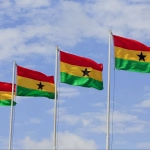In the tranquil waters of Ghana’s sea, lakes and rivers, a silent crisis lurks, claiming lives with an unrelenting grip – drowning.
The 2020 World Health Organization (WHO) report sheds light on a dire situation that demands our urgent attention. Beyond Ghana’s borders, neighbouring countries also grapple with this underreported but deadly scourge. It’s time to confront this issue head-on and prevent further tragedy.
Ghana is known for its vibrant culture and diverse landscapes, but beneath the surface lies a hidden danger. The WHO’s 2020 report paints a chilling picture, reporting 740 drowning fatalities, comprising 0.42% of total deaths. This issue places Ghana at a troubling 93rd position in the global ranking of drowning deaths. It’s a stark reminder that the threat is real and close to home.
Zooming out to the Sub-Saharan African region, Ghana’s struggle with drowning is not unique. Neighbouring countries like Burkina Faso, with 910 fatalities, and Togo, with 225 deaths, share our pain. Ivory Coast, with a staggering 1,232 deaths, grapples with its own crisis. In this corner of Africa, we are bound together not just by geography but by a shared peril.
The hidden tragedy is the unreported drownings
While the WHO report is a wake-up call, it’s important to note that the actual numbers could be even higher. Ghana has a troubling issue of unreported drowning cases. In remote areas like Mirigu and Sirigu, young lives are lost to drowning, and these incidents only come to light through social media. The absence of a systematic reporting mechanism conceals the true extent of the problem.
Who are the victims, and why are they at risk? Drowning doesn’t discriminate; however, certain trends emerge. The most vulnerable age groups are 5-9 years old, 10-14 years old, and young adults aged 18-25 and 25-35. Males are disproportionately affected, though some females also fall victim, often during recreational activities.
Root causes of drowning
Drowning incidents have multifaceted causes. Economic activities like fishing, lack of parental supervision, recreational ventures, children’s curiosity, the absence of swimming training, and the menace of floods all contribute to this grim statistic.
Ghana’s lack of data and collective effort is more catastrophic
Perhaps the most troubling aspect of this crisis is the lack of concrete data. There is no clear evidence that the Ghana Statistical Authority and the Ghana Population and Housing Census do include drowning deaths in their data collection questionnaire. This information gap hinders our ability to formulate targeted solutions. Moreover, there is no strong collective advocacy platform or national strategy for drowning prevention among others.
Voices of policymakers
While some policymakers and government officials express concern about drowning incidents, there is no cohesive effort. Civil society, too, is vocal during flood and disaster situations, but this focus is sporadic.
Here are some notable statements made by policymakers in the past:
1. In 2011, Mr. Alban Sumanna Bagbin, then Minister of Water Resources, Works, and Housing, called for measures to prevent drowning in water bodies across the country.
2. The Minority Caucus of Parliament in 2023 raised questions at the education committee level due to the drowning of nine people in Faana-Bortianor and eight children in the Sene East District in the Bono East Region.
3. The Greater Accra Regional Minister, Henry Quartey, expressed sorrow about the Faana river disaster, emphasizing the need to avoid politicizing such tragedies and so on.
The urgent call for a national drowning prevention plan
Ghana stands at a critical juncture. Drowning is a stark and silent crisis that is stealing lives, especially those of our children. We cannot allow this tragedy to persist. A comprehensive national drowning prevention plan is the need of the hour. This plan should unite government agencies, both majority and minority caucuses of parliament, civil society organizations, traditional rulers and other stakeholders in a collective effort to address the root causes of drowning and implement strategies to save people.
The strategies should encompass various measures, including but not restricted to deploying lifeguards at prominent rivers, lakes, seas, beaches, swimming pools, and similar locations. Additionally, it is imperative to address the issue of river dredging to facilitate unobstructed water flow, a critical step in preventing flooding, which poses a significant drowning risk in Ghana.
Ghana’s drowning epidemic is a tragedy that can no longer be ignored. Let us come together as a united nation to prevent future loss of life, ensuring that every child can grow up without the fear of being swept away by this silent tide. Our collective action can be the lifesaver our nation desperately needs now.
Conclusion:
The 2020 WHO report has pulled back the curtain on the alarming reality of drowning in Ghana. It’s a silent crisis that should fill us with alarm and compel us to take action. We must demand change, not just from our policymakers but from ourselves as a united community. We have the power to make a difference, to save lives, and to prevent further heartbreak. Let us not allow Ghana’s waters to continue as silent killers. The time has come to take action and secure a safer future for our nation and its people.
The writer is a Journalist, student of law and Development Communication Specialist with a special interest in the environment and people.
Contact: aabirigo@yahoo.com/+233 244 161 902/+233 203 183 337












